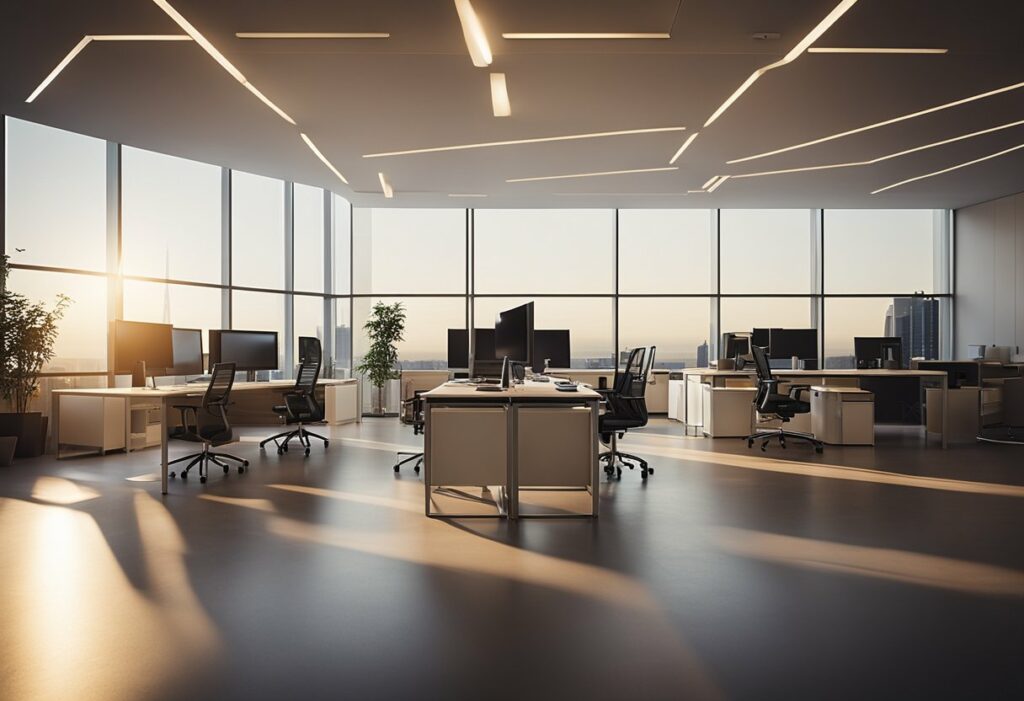Office Lighting Design: Creating a Productive and Comfortable Workspace
Are you looking to create an office space that is both comfortable and productive? One of the most important elements to consider is lighting design. Not only does lighting impact the mood and well-being of employees, but it can also have a direct effect on their performance.
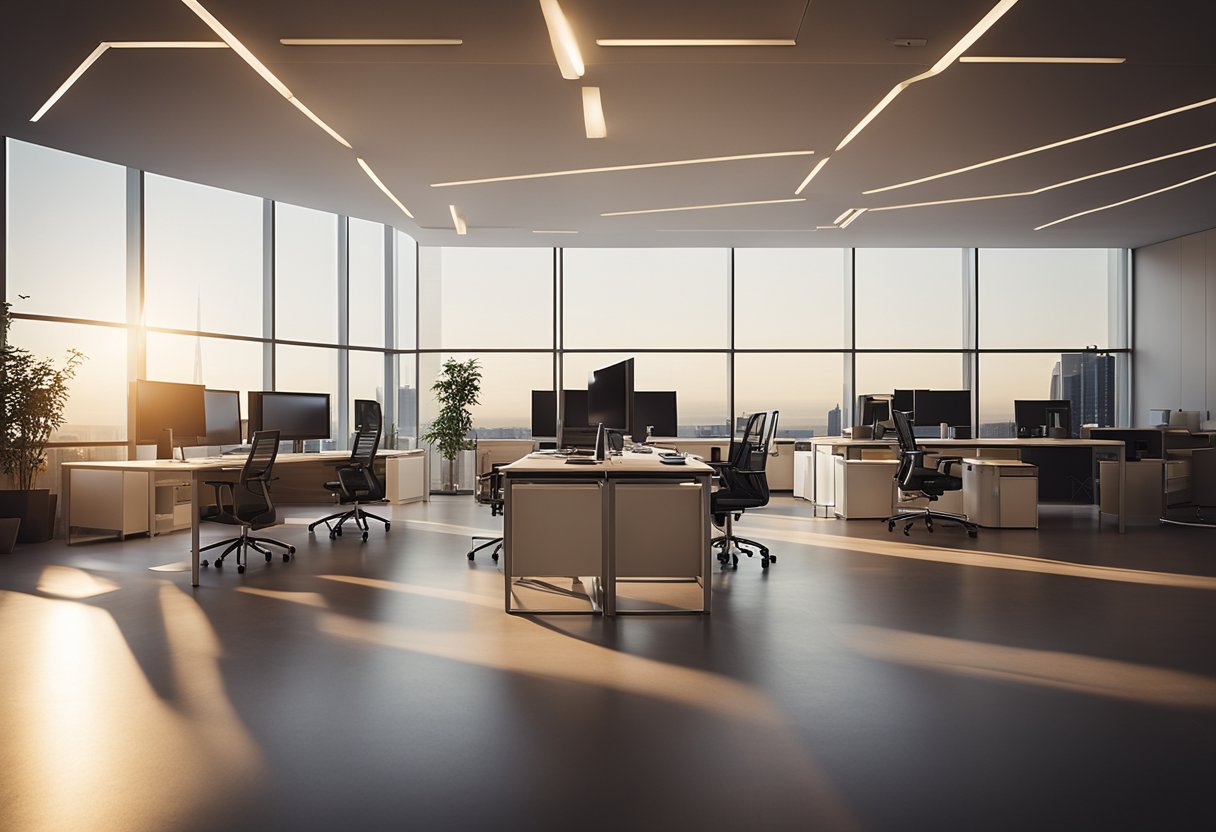
A well-designed lighting scheme can help to reduce eye strain, headaches, and fatigue, while also boosting productivity and creativity. Moreover, the right lighting can help to create a more welcoming and comfortable environment that encourages collaboration and communication. Whether you are designing a new office space or looking to update an existing one, it is essential to consider the fundamentals of office lighting design.
Key Takeaways
- Office lighting design is a crucial element in creating a comfortable and productive workspace.
- The right lighting can reduce eye strain, headaches, and fatigue while boosting productivity and creativity.
- Consider the fundamentals of office lighting design when designing or updating your workspace.
Fundamentals of Office Lighting Design
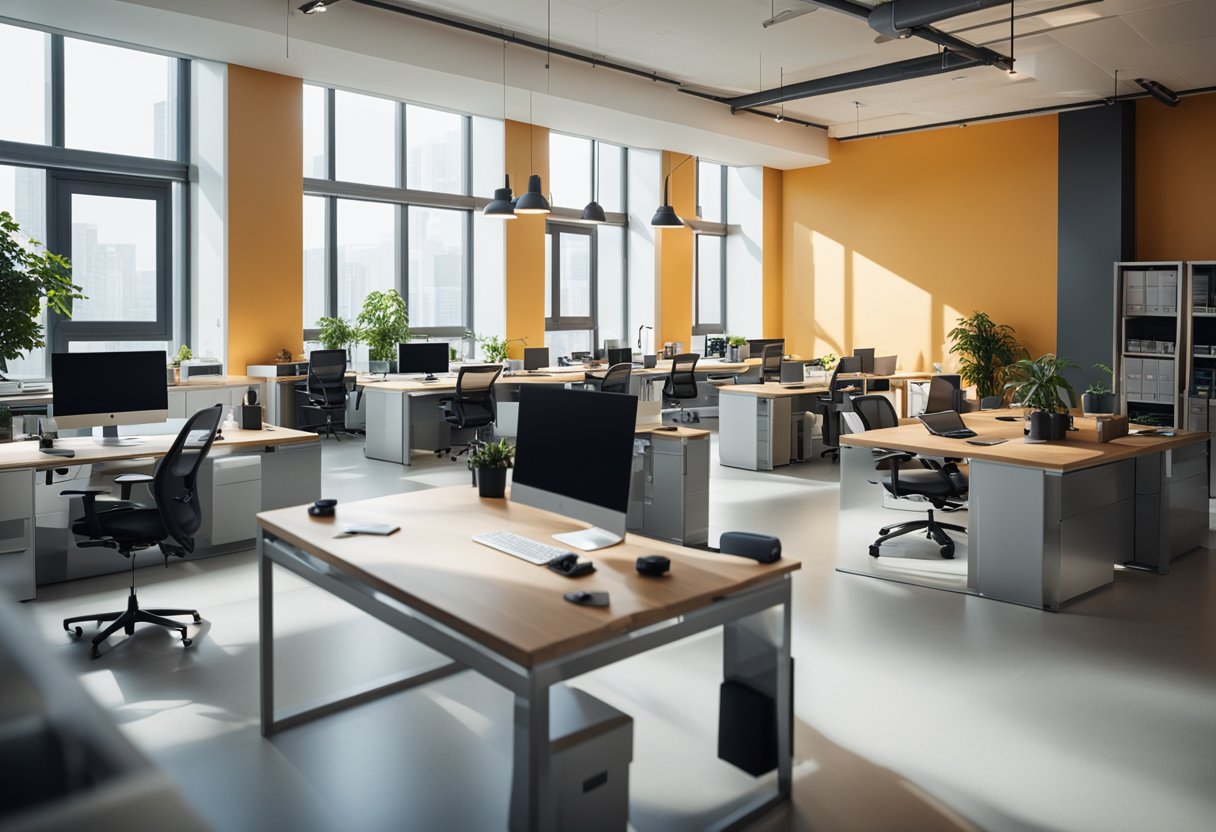
If you want to create a productive and healthy workplace, you need to pay attention to office lighting design. The right lighting can improve your mood, reduce eye strain, headaches, and fatigue, and boost your concentration and productivity. In this section, we will discuss the fundamentals of office lighting design and how it can impact your work environment.
Understanding Illumination and Light Sources
Illumination is the amount of light that falls on a surface. In an office, you need to ensure that the illumination is sufficient for the task at hand. There are three types of lighting that you should know – ambient lighting, task lighting, and accent lighting. All three should be found in an office for a better environment. Ambient Lighting is the most basic type of lighting, and it provides general illumination to the entire room. Task lighting, on the other hand, is used to illuminate specific areas where you work, read, or write. Accent lighting is used to highlight specific areas or objects in the room.
When it comes to light sources, LED lights are the most efficient and cost-effective option for office lighting. They are energy-efficient, long-lasting, and produce less heat than traditional light bulbs. In addition, LED lights can be dimmed to adjust the brightness according to your needs.
The Impact of Lighting on Productivity and Health
Office lighting design can have a significant impact on your productivity and health. Poor lighting can cause eye strain, headaches, and fatigue, which can affect your concentration and productivity. On the other hand, good lighting can improve your mood, reduce stress, and boost your energy levels.
Integrating Natural and Artificial Light
Integrating natural light into your office lighting design can have many benefits. Natural light can improve your mood, reduce stress, and boost your energy levels. It can also reduce your reliance on artificial lighting, which can save energy and reduce your electricity bills.
If you have windows or skylights in your office, make sure to use them to your advantage. You can position your desk near a window to take advantage of natural daylight. You can also use blinds or shades to control the amount of light that enters the room.
In conclusion, office lighting design is a crucial aspect of creating a productive and healthy work environment. By understanding illumination and light sources, the impact of lighting on productivity and health, and integrating natural and artificial light, you can create an office that is comfortable, efficient, and enjoyable to work in.
Optimising Office Lighting for Performance and Comfort
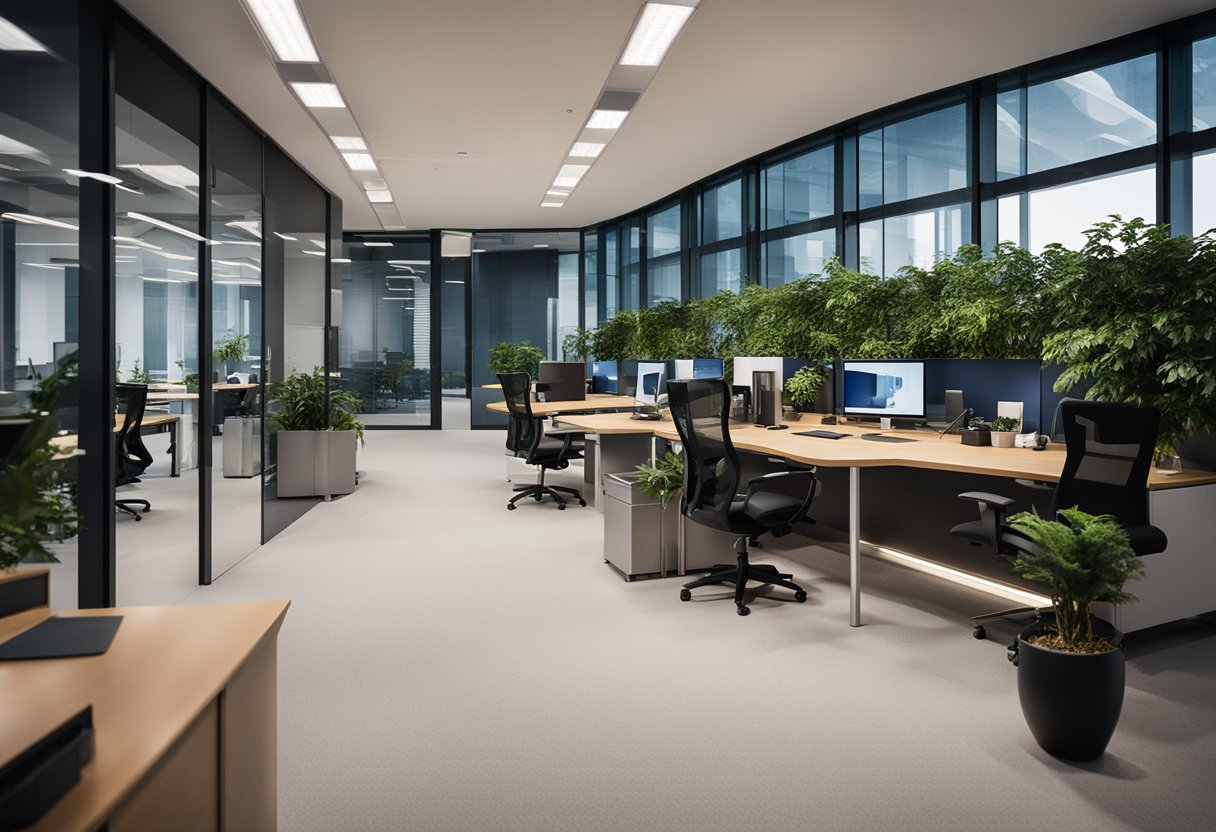
Creating a well-lit workspace is essential for maximising productivity and comfort in the office. The right lighting solution can help you avoid eye strain, headaches, and fatigue, while also improving your mood and overall well-being. In this section, we’ll explore some key considerations for optimising office lighting.
Task Lighting and Ergonomic Considerations
When it comes to office lighting, task lighting is essential for ensuring that you can see your work clearly and comfortably. Desk lighting or task lights can help you avoid glare and shadows, and reduce eye strain. Ergonomic considerations are also important when choosing task lighting. You should choose a light that can be easily adjusted to suit your needs and avoid placing it too close or too far away from your work.
Energy Efficiency and Sustainable Practices
Energy efficiency is an important consideration when designing office lighting. LED lighting is a cost-efficient and energy-saving option that can help you reduce your energy bills and carbon footprint. Additionally, sustainable practices such as recycling and using natural light can help you create a more environmentally friendly workspace.
Design Elements and Aesthetic Considerations
Aesthetic appeal is an important consideration when designing modern office lighting. Fixtures and accent lighting can help you create a unique ambience that reflects your brand and company culture. Colour temperature and light positioning can also have a significant impact on the look and feel of your workspace.
In conclusion, optimising office lighting is essential for creating a comfortable and productive workspace. By considering task lighting and ergonomic considerations, energy efficiency and sustainable practices, and design elements and aesthetic considerations, you can create a well-lit workspace that meets your needs and enhances your work environment.
Frequently Asked Questions
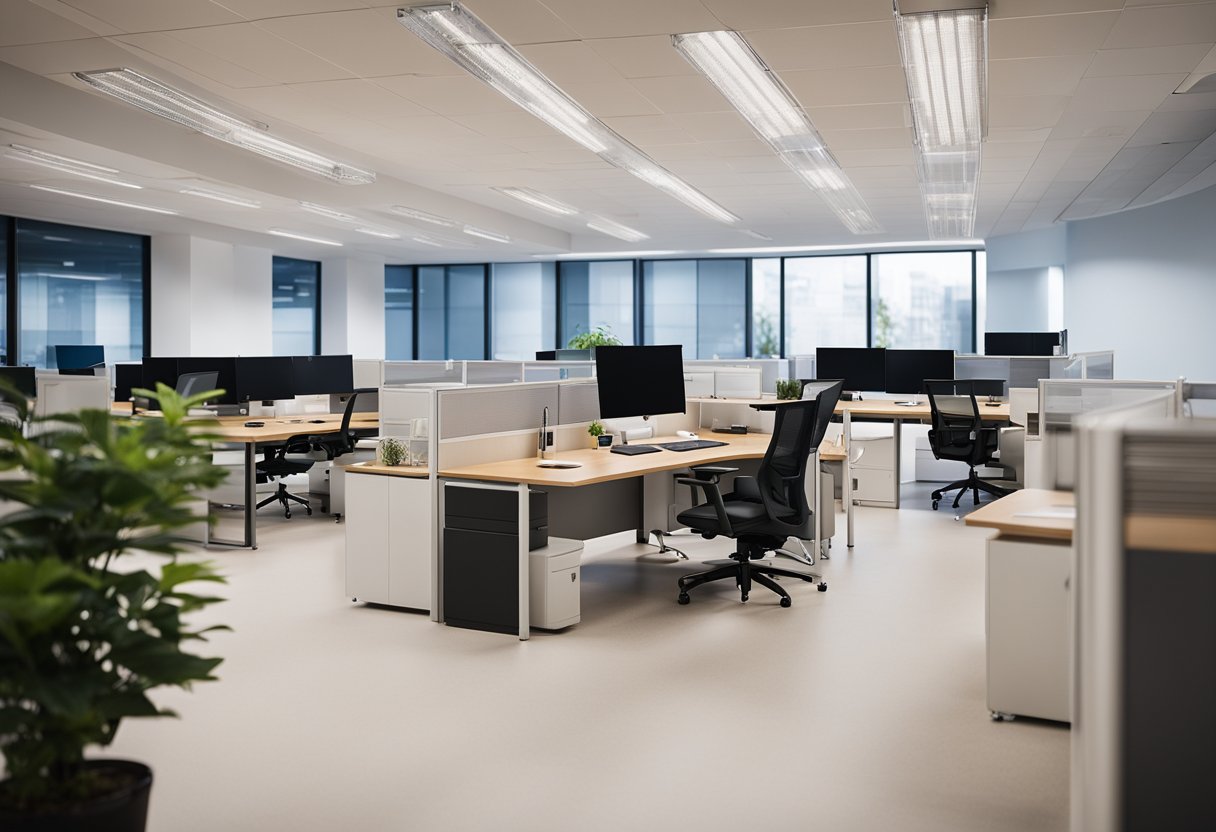
How can you create an invigorating lighting scheme for a small office space?
Creating an invigorating lighting scheme for a small office space is crucial to boost productivity and enhance the overall mood of the employees. You can achieve this by using a combination of ambient, task and accent lighting. Use ambient lighting to provide overall illumination to the space. Task lighting can be used to provide focused lighting for specific tasks such as reading, writing or using the computer. Accent lighting can be used to highlight specific areas or objects in the office, such as artwork or plants.
What are the top tips for designing the perfect home office lighting setup?
Designing the perfect home office lighting setup can be challenging, but there are a few tips that can help you achieve the ideal lighting scheme. Firstly, make use of natural light as much as possible by positioning your desk near a window. Secondly, use task lighting to provide focused lighting for specific tasks such as reading or writing. Thirdly, use ambient lighting to provide overall illumination to the space. Lastly, use accent lighting to add visual interest to the space and highlight specific areas or objects.
Could you suggest some innovative ideas for office ceiling lighting?
Office ceiling lighting can be designed in a variety of ways to create a unique and innovative space. One idea is to use pendant lighting to create a focal point in the room. Another idea is to use recessed lighting to create a clean and modern look. You could also use track lighting to highlight specific areas or objects in the office, such as artwork or plants.
What are the latest trends in modern office lighting design?
The latest trends in modern office lighting design include the use of energy-efficient LED lighting, the integration of lighting control systems, and the use of circadian lighting to enhance employee well-being. Other trends include the use of pendant lighting to create a focal point in the room, and the use of task lighting to provide focused lighting for specific tasks.
How do you perform accurate lighting design calculations for an office environment?
Performing accurate lighting design calculations for an office environment requires an understanding of the lighting requirements for the space. You need to consider factors such as the size of the room, the type of tasks performed in the space, and the desired mood or atmosphere. You can use lighting design software to perform accurate calculations and create a lighting plan for the space.
What are the most effective types of lighting to enhance productivity in the workplace?
The most effective types of lighting to enhance productivity in the workplace include natural light, task lighting, and ambient lighting. Natural light has been shown to improve mood and productivity, so it is important to make use of natural light as much as possible. Task lighting can be used to provide focused lighting for specific tasks, while ambient lighting can be used to provide overall illumination to the space.

